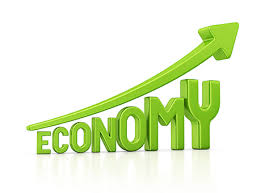An Introduction Of Telangana Economy
Telangana state was formed in June 2014 post the split of erstwhile Andhra Pradesh. The earlier capital city of Hyderabad is part of Telangana. The state holds an advantage as it possesses readymade capital with necessary infrastructure and ecosystem.
Between 2004-05 and 2015-16, Gross State Domestic Product (GSDP) expanded at a Compound Annual Growth Rate (CAGR) of 14.49 per cent to US$ 89.1 billion whereas the Net State Domestic Product (NSDP) expanded at a CAGR of 14.79 per cent to US$ 81.13 billion.
Agriculture
Telangana’s economy was long dominated by agriculture, notably the production of rice. The state’s rivers, particularly the Godavari and the Krishna, have been tapped to provide irrigation for the dry interior, although many areas still depend on the somewhat unpredictable monsoon rainfall. In addition to rice, other important crops are corn (maize) and cotton. The Nagarjuna Sagar multipurpose dam project on the border with Andhra Pradesh, which diverts the waters of
the Krishna for irrigation, has substantially increased the production of rice and sugarcane. Rice flour, rice-bran oil, paints and varnishes, soaps and detergents, cardboard and other packaging materials, and cattle feed are all produced from local paddy rice. Other agricultural commodities include chili peppers, sorghum, pulses (peas, beans, and lentils), castor beans, and peanuts (groundnuts), as well as a variety of tropical fruits. Livestock raising and aquaculture are also important, each accounting for a small but still significant component of annual economic output. The state’s woodlands annually yield high-quality timber, such as teak and eucalyptus. Non-timber forest products—including sal seeds (from which an edible oil is extracted), tendu leaves (for rolling cigarettes), gum karaya (a type of emulsifier), and bamboo—are also important. The state government initiated a major reforestation program.
Mineral
Among Telangana’s principal mineral resources are coal, limestone, quartz, granite, feldspar, dolomite, and barite. The diamond mines of the Golconda Plateau were once renowned worldwide for producing the Koh-i-noor diamond and other famous stones; efforts have been made to revive production in the area. Most of Telangana’s energy is produced by thermal generators in the public sector, with hydroelectric power stations providing an important secondary source of energy. In addition, the government has taken steps to develop wind and solar energyproduction.
Industries
Several major manufacturing and services industries are in operation mainly around Hyderabad. Automobiles and auto components industry, spices, mines and minerals, textiles and apparels, pharmaceutical, horticulture, poultry farming are the main industries in Telangana.
In terms of services, Hyderabad is usually nicknamed as Cyberabad due to its information technology foray and location of major software industries in the city. Prior to secession, it contributed 15% to India’s and 98% to Adhra Pradesh’s exports in IT and ITES sectors last 2013 With Hyderabad as in the front line of Telangana’s aims to promote information technology in India, the city boasts the HITEC City as its premier hub.
Power
Availability of quality power is indispensable for improving living standards and the growth of economy. State Government aimed at providing at least 9 hour a day free power supply for agricultural purpose and uninterrupted power supply for industrial and domestic consumption. Government has commissioned 6 new power projects with the target of producing additional 6840 MW power to meet the future needs.
Tourism
Tourism is now one of the world’s largest industries and one of its fastest growing economic sectors. Tourism may have a positive economic impact on the balance of payments, employment, gross income and production
Telangana is not only Hyderabad but, also offers the heritage site of the Kakatiya Fort, Rammappa Temple and the Thousand pillar temple at Warangal; for the Spiritually inclined, Lord Sri Ram Temple at Bhadrachalam, Heritage of Hyderabad and Warangal will be our focus area apart from the ancient temples at Yadrigutta, Vemulawada, Bhadrachalam, etc.
Key Sectors:
- Under the Department of Information Technology, Electronics & Communications, the Government of Telangana has introduced Telangana IT Policy, 2016 in April 2016 for the uplifting the performance of the sector in the state.
- As per the socio-economic survey 2015-16, at a projected amount of US$ 2.0 billion, the Hyderabad Pharma City is being established which will consist of R&D Lab, university, etc. The park is proposed to be established on 11,000 acres of land at Mucherla and is expected to create employment opportunities for 70,000 people.
- The Telangana government has allocated an amount of US$ 35.44 million for the development of tourism and culture department during 2016-17.
- As of March 2015, a new textile policy was introduced in Telangana. Purpose of this policy is to provide special incentives to the textiles sector. In order to promote the textile sector in the state, the Government of Telangana is working on a new textile policy to attract investments in the sector.
TSPSC Notes brings Prelims and Mains programs for TSPSC Prelims and TSPSC Mains Exam preparation. Various Programs initiated by TSPSC Notes are as follows:-
- TSPSC Mains Tests and Notes Program
- TSPSC Group I Prelims Exam 2024- Test Series and Notes Program
- TSPSC Prelims and Mains Tests Series and Notes Program
- TSPSC Detailed Complete Prelims Notes